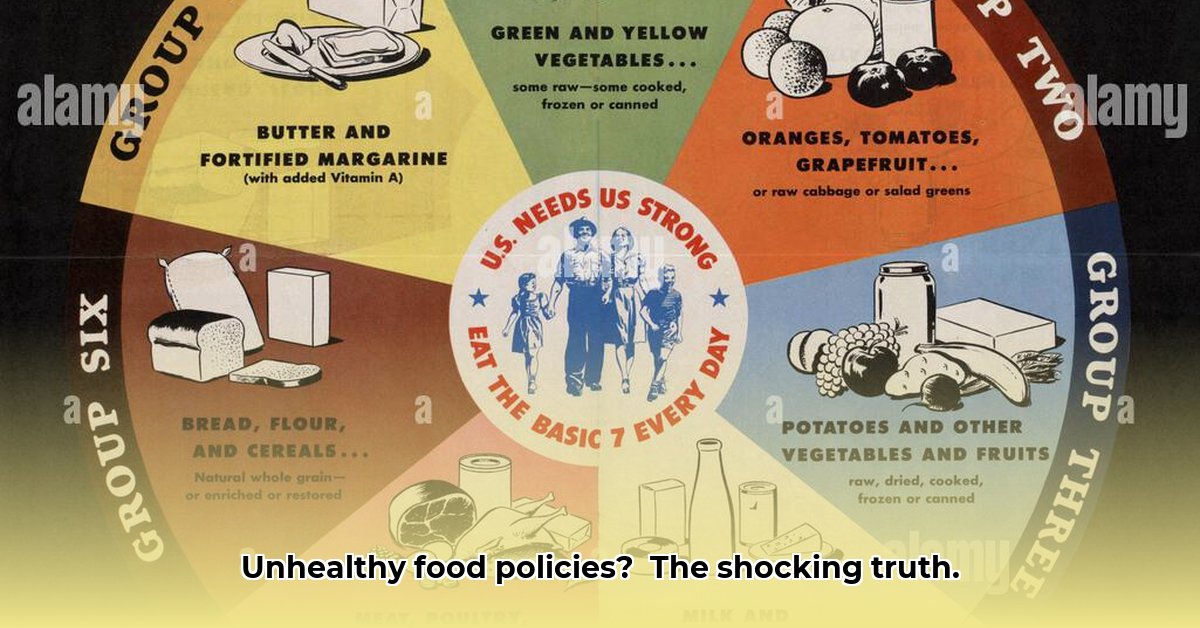Are you curious about how government initiatives affect healthy eating habits? This article offers a comprehensive overview of U.S. food policies, evaluating their effectiveness, challenges, and potential for improvement. For more information on government support, see this helpful resource.
Understanding Government’s Role in Promoting Healthy Eating
The U.S. government employs a range of strategies aimed at helping citizens adopt healthier eating habits. These initiatives, which span from direct financial assistance to public awareness campaigns, strive to improve nutrition across the population. Yet, the actual effectiveness and scope of these programs are continually being assessed and debated. Key programs include the Supplemental Nutrition Assistance Program (SNAP) and the Special Supplemental Nutrition Program for Women, Infants, and Children (WIC).
Examining Financial Support: SNAP and WIC
SNAP and WIC serve as foundational support systems. They provide financial assistance to low-income families, enabling them to purchase groceries. SNAP, formerly known as food stamps, aims to alleviate food insecurity by helping families afford basic food needs, while WIC focuses specifically on providing nutritious foods to pregnant women, new mothers, and young children. But how consistently do these programs foster long-term healthy eating habits?
These programs undeniably play a crucial role in alleviating food insecurity. Some critics argue that the financial aid provided may not always be enough to regularly purchase nutrient-rich foods like fresh fruits and vegetables, pointing to the high cost of healthy food options. Others contend that SNAP and WIC act as vital lifelines, significantly easing the burden of grocery expenses for financially strained families and ensuring that vulnerable populations receive essential nutrients, particularly during critical stages of development. To gain a comprehensive understanding of these programs, further longitudinal research is needed to fully assess their sustained impact on dietary choices and overall health outcomes.
Analyzing Education and Awareness Campaigns: The Imperative of Innovation
The government also invests in nutrition education campaigns and food labeling initiatives designed to empower consumers with the knowledge needed to make informed and healthier food choices. The primary objective is to promote healthier eating through enhanced awareness. But how successful are these initiatives in driving lasting changes in dietary behavior?
While attention-grabbing slogans and detailed nutrition facts panels play a role in raising awareness, their translation into sustained changes in eating habits is not always guaranteed. Dietary choices are complex, and information alone may not be enough to overcome ingrained habits or socioeconomic barriers. Effective behavior change requires more than just providing information. Active research is underway to explore interactive programs and community-based initiatives as potentially more effective approaches.
Investigating Agricultural Policies: Consequences for Food Production
Government policies governing agriculture exert a significant influence on the types of food produced and their affordability. Subsidies, in particular, play a crucial role in shaping the agricultural landscape. However, questions arise about whether these policies align with the overarching goal of promoting healthy eating.
Critics argue that subsidies often favor the large-scale production of commodity crops like corn and soybeans, potentially disadvantaging smaller farms specializing in fresh produce. The focus of agricultural subsidies can create an imbalance, making healthier options less accessible and affordable. Conversely, others maintain that all food production contributes to overall availability and helps lower food costs, thus bolstering food security for a broader population. Ongoing analysis is essential to determine the long-term implications of these agricultural policies on nutrition outcomes.
Examining Government Regulations: Balancing Public Health and Industry Interests
Government regulations shape various aspects of the food system, from production to marketing. Examples include mandatory nutrition labels and regulations targeting added sugars and unhealthy fats. However, such regulations often face strong opposition from the food industry.
The food industry’s marketing strategies exert considerable influence on consumer choices. The question becomes whether current regulations are robust enough to effectively counter the pervasive marketing of less healthy products. Analyzing the effectiveness of existing regulations and evaluating the potential for further measures to improve public health while remaining practical and feasible is essential.
Addressing Challenges and Opportunities in Government Strategies
Implementation of effective strategies faces persistent challenges. Access to healthy food is significantly affected by geographic location, income, and demographic factors. The programs’ effectiveness in addressing inequalities requires further improvement. Government efforts aimed at promoting healthy eating must also address issues related to affordability, physical access, and individual behaviors.
Changing ingrained eating habits is a difficult and continuous process. Information alone is often insufficient, necessitating more creative and long-term solutions to encourage healthier choices over time. These may include community-based programs, incentives, or modifications to the built environment that enhance access to grocery stores in underserved areas.
Steps to Improve Government Efforts in the Future
To enhance government efforts in promoting healthy eating, a multifaceted approach is essential:
- Strengthening Data Collection: Enhanced data collection is crucial for accurately measuring program effectiveness and identifying areas needing improvement. This requires better outcome tracking and in-depth analysis of factors influencing dietary habits.
- Increasing Funding for Nutrition Programs: Increased funding is necessary to reach more individuals in need and expand access to nutritious foods. This allows for broader program implementation and more effective community outreach.
- Developing Culturally Sensitive Programs: Program adaptation is needed to meet the diverse needs and preferences of different communities. This includes understanding cultural dietary norms and addressing language barriers.
- Promoting Collaboration: Collaboration among government agencies, healthcare providers, community organizations, and the food industry is vital for success. This collaborative approach permits a more holistic and effective promotion of healthy eating.
- Enhancing Accessibility: Improving access to healthy foods in underserved areas by supporting local food initiatives and addressing transportation barriers.
- Incentivizing Healthy Food Choices: Implementing incentive programs that reward individuals and families for purchasing healthy foods, particularly fruits and vegetables.
- Regulating Unhealthy Food Marketing: Implementing stricter regulations on the marketing of unhealthy foods, particularly to children, to counteract persuasive advertising tactics.
In conclusion, healthy eating is a shared responsibility. While the government plays a crucial role, individual choices and community support are equally important. Continuous research is critical to develop more effective solutions.
Enhancing U.S. Government Nutrition Programs
Key Improvements:
- Government nutrition programs such as SNAP, WIC, and the National School Lunch Program reduce food insecurity and improve overall dietary habits, particularly for low-income families and children.
- Inconsistencies in data collection and lack of coordination among agencies hamper comprehensive evaluations of program effectiveness.
- A data-driven framework is vital for assessing all nutrition programs, incorporating longitudinal data collection for better outcome tracking.
Strengths and Weaknesses of a Multi-Faceted Approach
The U.S. government applies various strategies to combat nutrition insecurity. These include financial aid (SNAP and WIC), educational initiatives (SNAP-Ed), and regulatory changes (updated nutrition labels). These programs are vital, but their success depends on effective implementation and coordination. While programs like SNAP measurably reduce food insecurity, the lack of standardized evaluation metrics limits the ability to fully grasp their true impact.
What are the obstacles? Data collection is inconsistent, and agencies often operate independently. According to a 2019 GAO report 1, there is a lack of a centralized system for tracking SNAP-Ed’s effectiveness. This lack of integration undermines the potential for a unified and efficient approach to promoting healthy eating.
Addressing the Data Deficit: Establishing a Path Forward
Improving U.S. government nutrition programs requires a systemic overhaul. This includes a unified evaluation framework with longitudinal data across all programs. This approach provides a clearer picture of long-term impacts and allows for more targeted interventions.
The USDA can take the lead by implementing the GAO’s recommendations, establishing clear metrics, and fostering better data sharing. The CDC’s role is equally important; strengthened collaboration with the USDA and enhanced data sharing are needed, alongside expanded research into varied nutrition interventions.
The Importance of Collaboration and Community Involvement
State and local agencies have a vital role. They need to enhance data reporting to the USDA, ensuring that program goals align with national objectives and building a consistent and cohesive approach. Simultaneously, food retailers can increase SNAP/EBT acceptance, expanding the availability of affordable and healthy options.
Healthcare providers can integrate nutrition counseling into their services. By working together, a substantial impact can be achieved in improving nutrition programs and promoting overall health.
Innovating and Adapting to Meet Diverse Needs
Program success is influenced by context, location, cultural preferences, and health issues of the target communities. Understanding these elements is key to tailoring interventions effectively and ensuring they are well-received and impactful.
Develop culturally tailored nutrition education materials that resonate with diverse communities. This addresses different dietary preferences and challenges and enhances the relevance and effectiveness of the education.
Sustaining Progress Through Continuous Improvement
Improving the effectiveness of U.S. government nutrition programs is a dynamic process that demands continuous feedback between data collection, evaluation, and program improvement. The potential for healthier populations is immensely rewarding and justifies the investment in these crucial initiatives.
Enhancing Access to Healthy Food in Food Deserts
Key Aspects:
- Food insecurity and food deserts can have a significant impact on health, increasing rates of chronic disease and exacerbating health disparities.
- Effective solutions combine education, improved access, and policy changes, addressing the multiple factors contributing to these issues.
- Community involvement is crucial for success, ensuring that initiatives are tailored to the specific needs and preferences of the residents.
Understanding Food Insecurity and Food Deserts
Food insecurity and food deserts are interconnected problems. Food insecurity involves lacking consistent access to enough food for a healthy life, while food deserts are geographic areas that lack readily available, affordable, and nutritious food options. This creates a cycle: limited access to healthy food contributes to poor health outcomes and exacerbates economic hardship.
Multifaceted Strategies for Improving Access
Addressing these issues requires a multifaceted approach that encompasses enhancing access, empowering communities, and enacting supportive policy changes.
1. Enhancing Access:
- Improving Infrastructure: Investing in transportation, such as public transit or bike lanes, makes healthy food options more accessible to residents in food deserts.
- Incentivizing Retailers: Providing tax breaks and other incentives to grocery stores and supermarkets that open in underserved areas encourages their involvement and helps to revitalize local economies.
- Supporting Local Food Systems: Promoting farmer’s markets, community gardens, and urban farms increases access to fresh produce and strengthens local food economies.
- Mobile Food Pantries: Mobile food pantries bring healthy food directly to communities lacking typical grocery stores, bridging the gap in access and addressing immediate needs.
2. Empowering Communities:
- Community-Based Participatory Research (CBPR): Tailoring initiatives to the specific needs and priorities of the community ensures they are culturally relevant and effective.
- Nutrition Education: Providing cooking classes, nutrition workshops, and educational programs empowers individuals to make healthier choices and prepares them to utilize available resources effectively.
- Strengthening Food Banks and Pantries: Improving the nutritional quality of food provided by food banks and pantries is essential to ensure that vulnerable populations have access to more nutritious options.
3. Policy Changes: A Critical Role
Government policies play a critical role in creating sustainable change and addressing the root causes of food insecurity and food deserts.
- Expanding SNAP and WIC Benefits: Increasing the purchasing power of these programs enables low-income individuals and families to afford more nutritious foods.
- Streamlining Access: Simplifying application processes and reducing bureaucratic hurdles makes it easier for eligible individuals to enroll in and benefit from these programs.
- Targeted Subsidies: Subsidies for healthy food purchases can make nutritious options, such as fruits and vegetables, more affordable.
Overcoming Obstacles and Ensuring Sustainability
Sustained funding, community engagement, and addressing logistical hurdles are key for long-term success. Continuous evaluation is also needed to assess the effectiveness of implemented strategies and make adjustments as necessary.
Essential Future-Proofing Strategies for Healthy Eating Initiatives
Crucial Points:
- Implementation of healthy eating policies is not uniform across U.S. Local Health Departments (LHDs), particularly affecting smaller LHDs with limited resources.
- Larger LHDs and those with accreditation are more likely to adopt evidence-based strategies due to their greater capacity and resources.
- National initiatives require strong local-level support for effective implementation and to ensure they are tailored to the specific needs of each community.
Addressing the Patchwork of Progress
FDA and USDA work diligently to create national policies aimed at promoting healthy eating. However, their actual impact can vary significantly from community to community, depending on the resources and priorities of local health departments.
The Disadvantages Smaller Health Departments Face
Smaller Local Health Departments (LHDs) are less likely to integrate healthy eating policies into Community Health Improvement Plans (CHIPs) due to limitations in staffing, funding, and expertise. This disparity undermines efforts to achieve consistent progress across all regions.
Bridging the Disparity Gap
Essential Future-Proofing Strategies For Healthy Eating Initiatives necessitate specific actions to address the challenges faced by smaller LHDs and ensure equitable access to resources and support:
- Targeted Support for Smaller LHDs: Providing more direct funding and technical assistance helps build their capacity to implement and sustain effective healthy eating initiatives.
- Strengthening Community-Level Integration: Integrating healthy eating policies into broader CHIPs through enhanced collaboration ensures that these initiatives are aligned with other community health priorities.
- Addressing Barriers to Implementation: Understanding and overcoming political and economic obstacles, such as resistance from local businesses or lack of community buy-in, is essential for successful implementation.
- Improved Data Collection and Evaluation: Measuring policy successes and failures provides valuable insights into what works and what improvements are needed to enhance the effectiveness of healthy eating initiatives.
- Investing in Research and Development: Ongoing research into cost-effective and culturally appropriate strategies is vital for developing tailored interventions that meet the unique needs of diverse communities.
Emphasizing Collaboration
Collaboration between federal agencies, local health departments, community organizations, and the food industry is crucial for fostering a supportive environment that makes healthier food choices more accessible and affordable for all individuals.
Moving Forward
Effective implementation requires investing in local capacity and fostering robust collaboration in order to help communities access the resources and support they need to promote healthy eating and improve overall health outcomes.
- Your Perfect Bento Box Bag For Fresh And Tidy Meals - December 2, 2025
- Korean Meal Prep Made Easy For Delicious Weekday Meals - December 1, 2025
- Korean Food Meal Prep Makes Flavorful Weekday Meals Simple - November 30, 2025










